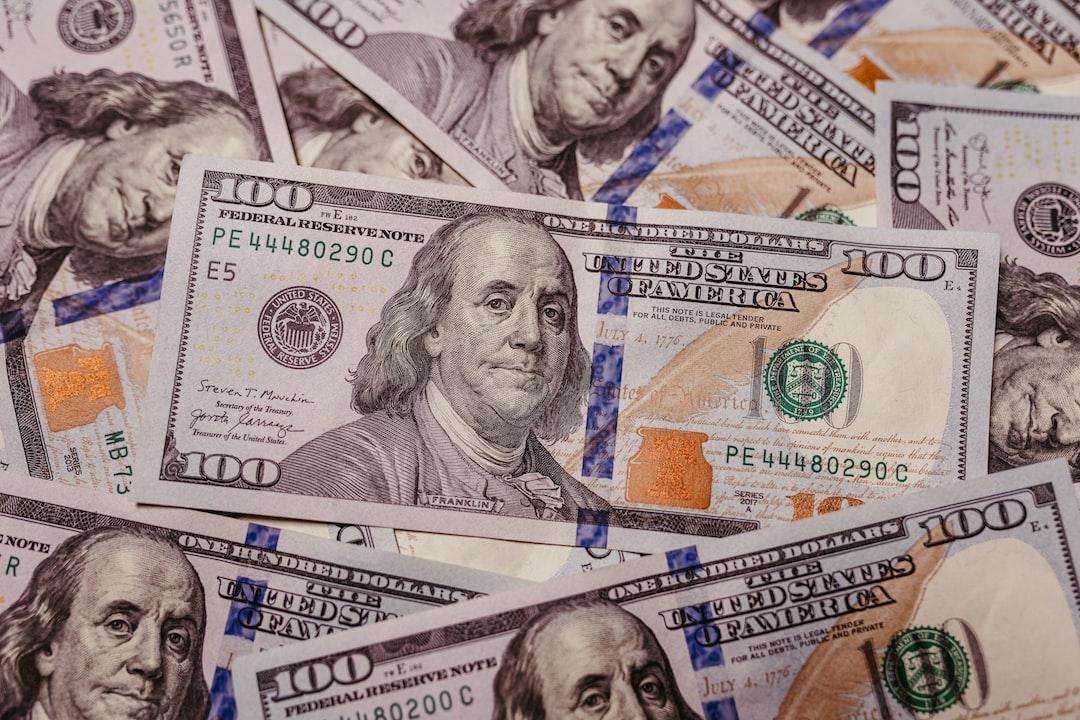Some of you think you are now masters of the universe because you bought Solana for less than $10 and sold it for $200. Others did the smart thing, selling fiat currency for cryptocurrencies during the bear market from 2021 to 2023 and reducing their holdings as prices skyrocketed this first quarter. If you trade garbage coins for Bitcoin, you get a pass. Bitcoin is the hardest money ever created.
Bull markets don’t come around often; it’s ironic when you make the right call but fail to maximize your profit potential. We have too many people trying to rationalize bull markets. As long as the bull market continues, they will buy, hold, and buy more.
Read more
BitMEX founder Arthur Hayes: Bitcoin will fluctuate between $60,000 and $70,000 before August
Be careful of “poisoning” cryptocurrency addresses! Instantly stolen nearly $70 million by “doing one less thing”
Sometimes, I find myself thinking like a loser. When I do, I have to remind myself of the macro themes that the entire retail and institutional investment world has bought into. That is, all major economic regions (US, China, EU, and Japan) are devaluing their currencies to decrease the leverage of their government balance sheets. Now, TradFi can profit off this narrative through US and soon-to-be-launched UK and HK spot Bitcoin ETFs, urging clients to use these cryptocurrency derivatives to preserve the purchasing power of their wealth.
I’d like to quickly explain the fundamental reason why cryptocurrencies have risen so much relative to fiat currencies. Of course, this narrative will lose its efficacy one day, but that day is not today. Right now, I’ll suppress the urge to take my chips off the table.
When we exit the soft window caused by US taxes and the Bitcoin halving on April 15 that I predicted, I want to remind readers why the bull market will continue and prices will become even more foolish. There aren’t many things in the market that get you from here (Bitcoin from zero in 2009 to $70,000 in 2024) to there (Bitcoin to $1,000,000). However, as the sovereign debt bubble begins to burst, leading to an increase in fiat liquidity and driving the macro environment that propels Bitcoin higher, it will become even more apparent.
Nominal Gross Domestic Product (GDP)
What is the purpose of government? Governments provide public goods such as roads, education, healthcare, and social order. Obviously, this is a wish list for many governments that provide death and despair…but I digress. In return for these services, we citizens pay taxes. A balanced-budget government provides as many services as possible under a certain amount of tax revenue.
However, sometimes governments borrow money to do something they believe will generate long-term positive value without taxing. For example, building an expensive hydroelectric dam. The government doesn’t raise taxes; it issues bonds to pay for the dam. The hope is that the economic returns from the dam will equal or exceed the yield on the bonds. The government attracts citizens to invest in the future by paying returns on the economic growth created by the dam. If, after 10 years, the dam will create 10% economic growth, then the government bond yield should be at least 10% to attract investors. If the government pays less than 10% in costs, its profit comes at the expense of the public. If the government pays more than 10%, the public bears the cost of its profit.
Let’s zoom out and discuss the economy from a macro perspective. The economic growth rate of a specific nation is its nominal GDP, composed of inflation and real growth. If the government wants to drive nominal GDP growth through a budget deficit, it is natural and logical for investors to expect returns equal to the nominal GDP growth rate.
Real Yield = 10-Year Government Bond Yield – Nominal GDP Growth Rate
When the real yield is positive, government bonds are a good investment. Governments are usually the most creditworthy borrowers.
When the real yield is negative, government bonds are a bad investment. The trick for investors is to find assets outside the banking system that grow faster than inflation.
All four major economic regions have implemented policies that suppress savers and result in negative real yields. China, the EU, and Japan have ultimately taken cues from the US in monetary policy. Therefore, I’ll focus on the US’s past and future monetary and fiscal condition. As US engineers loosen financial conditions, the rest of the world will follow suit.
This chart shows the real yield (USNOM index) in white and the Federal Reserve’s balance sheet in yellow. I started from 2009 because that’s when the Bitcoin genesis block was launched.
As you can see, the real yield turned negative after the deflationary shock of the 2008 global financial crisis. Due to the deflationary shock of the pandemic, the index briefly turned negative again.
Translation:
Currency tightening shock refers to the surge in real yield due to a sharp decline in economic activity.
Except for 2009 and 2020, government bonds have always been a poor investment compared to stocks, real estate, and cryptocurrencies. Bond investors can only achieve good performance by using crazy leverage for trading. This is the essence of risk parity for hedge fund puppets.
This unnatural state occurs because the Federal Reserve expands its balance sheet by buying government bonds with printed money, a process known as quantitative easing (QE).
During this period, the only safe-haven asset with a negative real yield has been Bitcoin (yellow) as shown in the logarithmic chart. Bitcoin’s rise is purely a function of a limited quantity asset priced in depreciated US dollars.
This explains the past situation, but markets are forward-looking. Why should you continue your cryptocurrency investment and have confidence in this bull market that has just begun?
Free crap.
Everyone wants something for nothing. Obviously, the universe will never provide something so cheap, but that does not stop politicians from promising benefits without raising taxes. Support for any politician, whether at the ballot box in a democratic country or through implicit support in a more authoritarian system, stems from the ability of politicians to create economic growth. When simple and obvious growth-supporting policies are enacted, politicians will resort to printing money to funnel funds to their favorite constituencies at the expense of the entire population.
As long as the government borrows at a negative real yield, politicians can offer their supporters free stuff. Therefore, the higher the partisanship and polarization in a nation-state, the more incentive the ruling party has to increase its chances of re-election by spending money it does not have.
2024 is a critical year for the world as many major countries will hold presidential elections. The US election is crucial globally because the ruling Democratic Party will do everything it can to hold on to power (they have done some suspicious things to the Republican Party since the Orange Man “lost” the last election). A large portion of Americans believe that the Democratic Party cheated Trump out of victory. Whether you believe this is true or not, the fact that a significant number of people hold this view ensures that the stakes for this election are very high. As I mentioned before, the peaceful fiscal and monetary policies underpinning the US will be emulated by China, the EU, and Japan, which is why it is important to pay attention to the election.
The above chart from BCA Research shows the political polarization in the US over time. As you can see, voters have never been so polarized since the late 19th century. From an electoral perspective, this allows the winner to take all. The Democratic Party knows that if they lose, the Republican Party will reverse many of their policies. The next question is, what is the simplest way to ensure re-election?
This is a stupid economy. Voters who have not yet decided on the winner base their decisions on their perception of the economy. As shown in the chart above, if the public believes the economy is in a recession during an election year, the incumbent president’s chances of re-election drop from 67% to 33%. How can the ruling party that controls monetary and fiscal policy ensure no recession?
Nominal GDP growth is directly influenced by government spending. As seen in this chart from Bianco Research, US government spending accounts for 23% of nominal GDP. This means that the ruling party can create GDP at will, as long as they are willing to borrow enough money to meet the desired level of spending.
The Chinese government determines the GDP growth rate each year. Then, the banking system creates enough credit to drive economic activity to the desired level. For many Western-trained economists, the “strength” of the US economy is puzzling because many of the major economic variables they monitor indicate an impending recession. But as long as the ruling party can borrow at negative interest rates, it can create the economic growth needed to stay in power.
This is why the Democratic Party, led by President Biden, is doing everything it can to increase government spending. Then, US Treasury Secretary Janet Yellen and her Federal Reserve Chairman Powell need to ensure that US Treasury yields remain significantly lower than nominal GDP growth. I don’t know what euphemism they will come up with to ensure the continuation of negative real yields, but I believe they will take the necessary measures to secure their boss and his party’s re-election.
However, the Orange Man may win. In that case, what changes will happen to government spending?
The chart above estimates the deficits during Biden’s or Trump’s presidency from 2024 onwards. As you can see, Trump’s spending is expected to be even higher than Slow Joe’s. Trump is seeking another round of tax cuts, which will further expand the deficit. Regardless of which elderly clown is chosen, rest assured that government spending will not decrease.
The Congressional Budget Office (CBO) predicts large-scale deficits based on the current and assumed future political environment. Fundamentally, if politicians can create 6% growth by borrowing 4%, why would they stop spending?
As mentioned above, the political situation in the United States gives me confidence in the development of the printing press. If you think the actions of US monetary and political elites to “solve” the 2008 global financial crisis and the pandemic are absurd, then you haven’t seen anything yet.
The peripheral wars on the American peace continue primarily in the Ukraine/Russia and Israel/Iran battlefields. As expected, war mongers from both parties are satisfied with continuing to fund their proxies with borrowed billions. Costs will only increase as the conflicts escalate and more countries get involved.
In conclusion, as we enter the summer in the northern hemisphere, decision-makers have a chance to catch their breath, and the volatility of cryptocurrencies will decrease. This is the best time to slowly increase positions using the recent dip in cryptocurrencies. I have a list of crap coins that suffered heavy losses last week. I will discuss them in future articles. There will also be many token launches, but they will not be as popular as the first quarter launches. This provides a good entry point for those who are not presale investors. No matter how exciting the taste of cryptocurrency risk is to you, the next few months will provide a golden opportunity to increase your position.
Your intuition is correct that as politicians spend money on handouts and wars, the printing press will accelerate. Do not underestimate the desire of the current elites to stay in power. If real interest rates turn positive, reassess your cryptocurrency beliefs.




